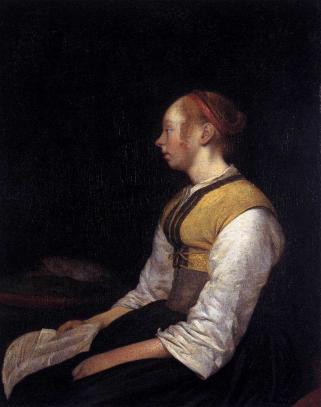In a ballet about a girl who loved to dance, full of virtuoso solos for it’s protagonist, it might seem odd that the mad scene, the climax to Act 1, is distinguished by the absence of dancing. In the ballet, when Giselle realises that the future she might have imagined for herself with Albrecht was, in Mark Fisher's terms, already lost to her before she met him, her descent into madness is expressed in the most poignant way, through the memory of steps she danced and the love she thought she knew.
A lost future
Alastair Macaulay, in an article for the New York Times, writes about different ways ballet and opera explore the madness of female heroines. He notes how in opera madness reveals 'one of the arts great potentials' (Alastair Macaulay: They've come undone, Giselle, Lucia and Romantic Madness online) citing the tempting prospect of an entire LP of mad scenes recorded by Maria Callas (https://youtu.be/B457wQhofbc).
Macaulay's collaborative research project Giselle: Questions and Answers explores the ballet extensively and questions 43 and 44 pertain to the mad scene in the ballet, specifically noting the relationships to operas of the time and the influence of Hamlet.
An emotional range
While Giselle's madness is not expressed through dancing, the mad scene in the ballet does allow a dancer to explore a range of emotions where Giselle might move between sadness, horror, anger, and shock. Montages on YouTube offer any opportunities to explore recordings of how ballerinas have interpreted this climax to Act 1. What these fragments of different interpretations speak to is the depth of possibilities that the scene offers when thinking about Giselle and women and madness, historically and today
Giselle's school report: excessive unruliness
Dance scholar Susan Leigh Foster explores how Giselle ‘s love of dancing marks her out as vulnerable to madness in her study of concepts of empathy and sympathy. Leigh-Foster writes that in the 19th century '... dancing had the capacity to improve women through its moderation, but equally, the ability to produce excessive unruliness' (Susan Leigh-Foster, Choreographing Empathy, pg 294). Giselle's vulnerability is both physical and psychological. She is also marked as potentially 'mad' because Giselle, who entices her friends to dance rather than go to work, who chooses the handsome stranger rather than the boy next door and who heeds no warning about the danger of dancing, is a threat to the established order
A threat to stability
This theme of Giselle as a threat to social stability is picked up in Swedish choreographer Mats Eks 1982 adaptation where he highlights Giselle as an outlaw in a narrative of class tensions between rural peasantry and rich city dwellers. In Eks' telling Giselle is already living outside of her community, a childlike figure tethered by a rope to Hilarion, she expresses her sexuality freely, it is she who approaches Albrecht and is ultimately punished by her community who lock her away.
Giselle in the asylum
The mad scene is key to Eks questioning a system that rests women’s worth in their fertility, and punishes them for expressions of sexuality. Giselle wakes up in Act 2 surrounded by women dressed in white, however this is no forest but an asylum. The history of psychiatry used as a way to uphold mens power over women originates in the 19th Century where women, as male property as daughters or wives, could be incarcerated for any number of transgressions including infertility or being raped.
The economics of madness
Mark Fisher, who himself experienced periods of mental illness wrote about how madness, vulnerability and stress have become a both a symptom and a commodity in late capitalist society. Fisher worked in Further Education institutions with young people, and wrote about a rise in the diagnosis of mental illness in young people struggling to understand a model where they are both 'objects of discipline' while being expected to and act as consumers (Mark Fisher, Joan of Art, online). Additionally these young people are often managing complex emotional and economic responsibilities while simultaneously looking to an uncertain future
At 15 Giselle is aware of her beauty, her charm and her great dancing, she's also a seasonal worker, the only child of a lone parent living in poverty whose carer she will probably be one day. Perhaps what cracks her mind is not so much the realisation that Albrecht loves someone else, but the sudden shocking realisation of the role of class in his choice and just how precarious life is for a poor girl.


